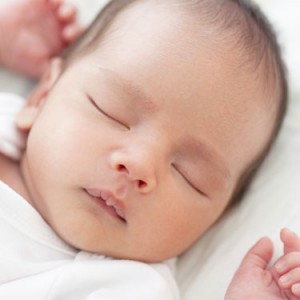Doctors’ Notes
BackSafe Sleep
If you’re a parent of a newborn, you’re already well aware of the level of sleep deprivation involved with having a new baby. If you’re expecting a baby, you may be setting up a nursery and trying to decide what gear is necessary and safe.
 Sleep is something near and dear to all of us, and naturally we all want to be sure our babies are safe when they (and hopefully you) get to catch up on some Zs. So here’s what we know about creating a safe sleep environment for a new baby.
Sleep is something near and dear to all of us, and naturally we all want to be sure our babies are safe when they (and hopefully you) get to catch up on some Zs. So here’s what we know about creating a safe sleep environment for a new baby.
Sleeping Face-Up
Because of the “Back to Sleep” campaign (now called “Safe Sleep” begun in the 1990s by the American Academy of Pediatrics and other organizations, the number of babies dying of SIDS each year has been cut in half.
We recommend babies are always put to sleep on their backs. Many parents might worry that if their baby is sleeping on his back and spits up, he could choke. Rest assured a baby’s airway anatomy and gag reflex will prevent this.
It’s not recommended that you elevate the head of a sleep surface or insert any wedges or positioners under baby. Once a baby can roll over independently, she can sleep on her tummy.
Because spending significant amounts of time on their backs can cause flattening of the back of the head, we recommend babies get plenty of tummy time, and that they’re repositioned frequently when they’re awake…
Flat Sleep Surface
Nothing that could end up on the baby’s face — pillows, blankets, sleep positioners, stuffed animals, crib bumpers, and the like — should be inside the crib.
Layer your baby in extra clothing if it’s cool in the house, instead of covering them with a loose blanket.
Swaddles should be tightly fitting and begin no higher than baby’s shoulders
Room-Sharing With Baby
Having your baby sleep in her own sleep space in the same room as you also reduces the risk of SIDS, and keeps baby close for those frequent night feedings.
Breastfeeding
Data shows that breastfeeding is protective against SIDS! Even if a baby is breastfed for a short duration, the benefits are real. Another great reason to give it a try!
No Smoking
Cigarette smoke exposure is harmful for babies and children in lots of ways. One of them is an increased risk of SIDS. Quitting is the best option, but if not, be sure to keep baby away from smoke fumes, including on clothing and in cars.
Immunize on Time
Research suggests immunizing babies on time decreases the risk of SIDS.
Soothing Baby
We all know that despite our best intentions, babies don’t typically emerge from the womb ready to sleep flat on their backs, apart from the comforting sounds of their mother’s heartbeat. For more information on soothing infants, check out Dr. Wolynn’s wonderful Doctor’s Note on the subject, and listen to our Kids + Podcast Episode with Dr. Harvey Karp.
Potential Dangers
Many families are tempted to bring baby into bed to hopefully provide better sleep, and we acknowledge that struggle. Here are situations when bed sharing is especially dangerous:
• The baby was born prematurely or with low birth weight
• A parent uses alcohol or other medications or drugs that make it more difficult to wake up
• A parent smokes (even if they don’t smoke in bed)
• The baby is not breastfed
• The baby has an underlying medical condition
• The baby is not put on their back to sleep
• The surface is soft — such as a waterbed, couch, or recliner.
• There are blankets or pillows on the bed with the baby
If you have any questions or concerns about your baby’s sleep, you can always talk with your provider at your next Well Visit, or give us a call in the office anytime. We’re always happy to help.
Dr. Amy Maddalena, a Kids Plus Provider since 2006, is the Medical Director of our Breastfeeding Center of Pittsburgh.